Manufacturers Warn: PFAS Standards Threaten Industry and National Security
Washington, D.C. – Following the Environmental Protection Agency’s announcement on per- and polyfluoroalkyl substances in drinking water, National Association of Manufacturers President and CEO Jay Timmons issued the following response:
“We’re encouraged that the EPA has listened to the voices of manufacturers and extended the compliance deadline for unworkable national primary drinking water standards for PFOA and PFOS and committed to reconsidering the blatantly unlawful regulatory determinations for several other PFAS compounds.
“If the U.S. wants to stay a global manufacturing leader, we need practical, commonsense PFAS regulations. Manufacturers support science-based regulations that protect health and the environment and are in line with the Safe Drinking Water Act requirements. However, the Biden-era standards for PFOA and PFOS are deeply flawed, the costs they impose exceed any demonstrable benefit and the industries they harm include those vital to our national interests, including semiconductors, telecommunications and defense systems. The Pentagon has even raised alarms about long-term risks, including supply chain disruptions, that these standards would create.
“In addition to conflicting with manufacturers’ best interests, these standards also go against the Trump administration’s goal to make the U.S. the best place to build, grow and create jobs—a goal the administration is advancing by rebalancing regulations. The administration has done remarkable work to advance that goal, but today’s decision moves in the opposite direction.
“The decision runs counter to past efforts to cut red tape and boost manufacturing by putting shovels in the ground, more people to work, more products on the shelves and more prosperity into our communities. We don’t have to choose between supporting manufacturing and clean water in our communities.”
-NAM-
The National Association of Manufacturers is the largest manufacturing association in the United States, representing small and large manufacturers in every industrial sector and in all 50 states. Manufacturing employs nearly 13 million men and women, contributes $2.94 trillion to the U.S. economy annually and accounts for 53% of private-sector research and development. The NAM is the powerful voice of the manufacturing community and the leading advocate for a policy agenda that helps manufacturers compete in the global economy and create jobs across the United States. For more information about the NAM or to follow us on Twitter and Facebook, please visit www.nam.org.
DOE LNG Study Misses the Mark
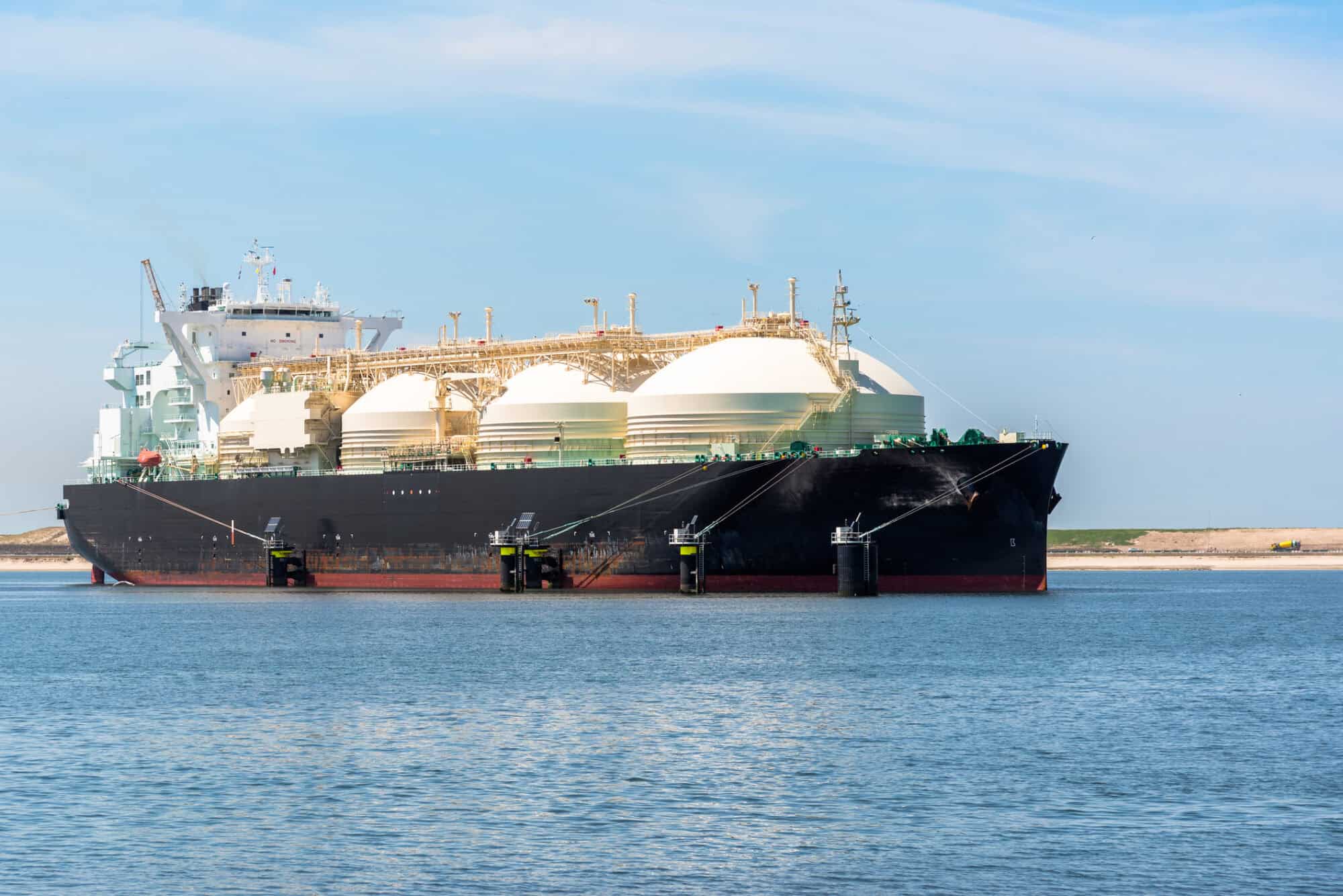
The NAM is urging President Trump to reconsider the Biden administration’s misguided findings regarding new liquefied natural gas export permits, following the release of a Department of Energy study claiming that increased permit numbers would have negative effects on the nation.
What’s going on: The Department of Energy’s analysis, released Tuesday, holds “that ‘unfettered’ shipments of the fuel would make domestic prices rise … [and would] displace more renewables” (E&E News).
- However, the “report from Energy Secretary Jennifer Granholm is clearly a politically motivated document designed for an audience who believes no form of carbon-based energy is acceptable,” NAM President and CEO Jay Timmons said. “LNG exports play a crucial role in reducing emissions by providing cleaner energy alternatives to countries reliant on higher emission sources.”
What the ban’s done: The result of the Biden administration’s moratorium—issued in January—on the issuance of new U.S. LNG export permits has been “chilled energy investment, costing the country manufacturing jobs and holding us back from achieving energy dominance on the world stage,” Timmons continued.
- “The DOE’s report claims to be concerned about security, but the actions of this administration on LNG only serve to incentivize Europe to purchase natural gas from Russia.”
A popular, key energy source: U.S. LNG is far cleaner than Russian LNG (House Energy and Commerce Committee). Furthermore, an October study by the NAM and PwC found that U.S. LNG is a significant and crucial contributor to gross domestic product, as well as an important source of jobs and federal, state and local taxes.
- What’s more, Americans want to keep exporting it. In a March NAM poll of 1,000 registered voters, more than 87% said they believe the U.S. should continue to export LNG.
The bottom line: “The data is clear: LNG exports are a driving force for economic growth and job creation in the United States,” Timmons concluded. “Halting LNG export licenses as suggested would threaten nearly a million jobs and undermine our nation’s economic stability. The NAM asks President Trump to end this political war on the energy manufacturers that power our economy, fuel job growth and help ensure America’s national security.”
NAM to EPA: Revise October PFAS Rule
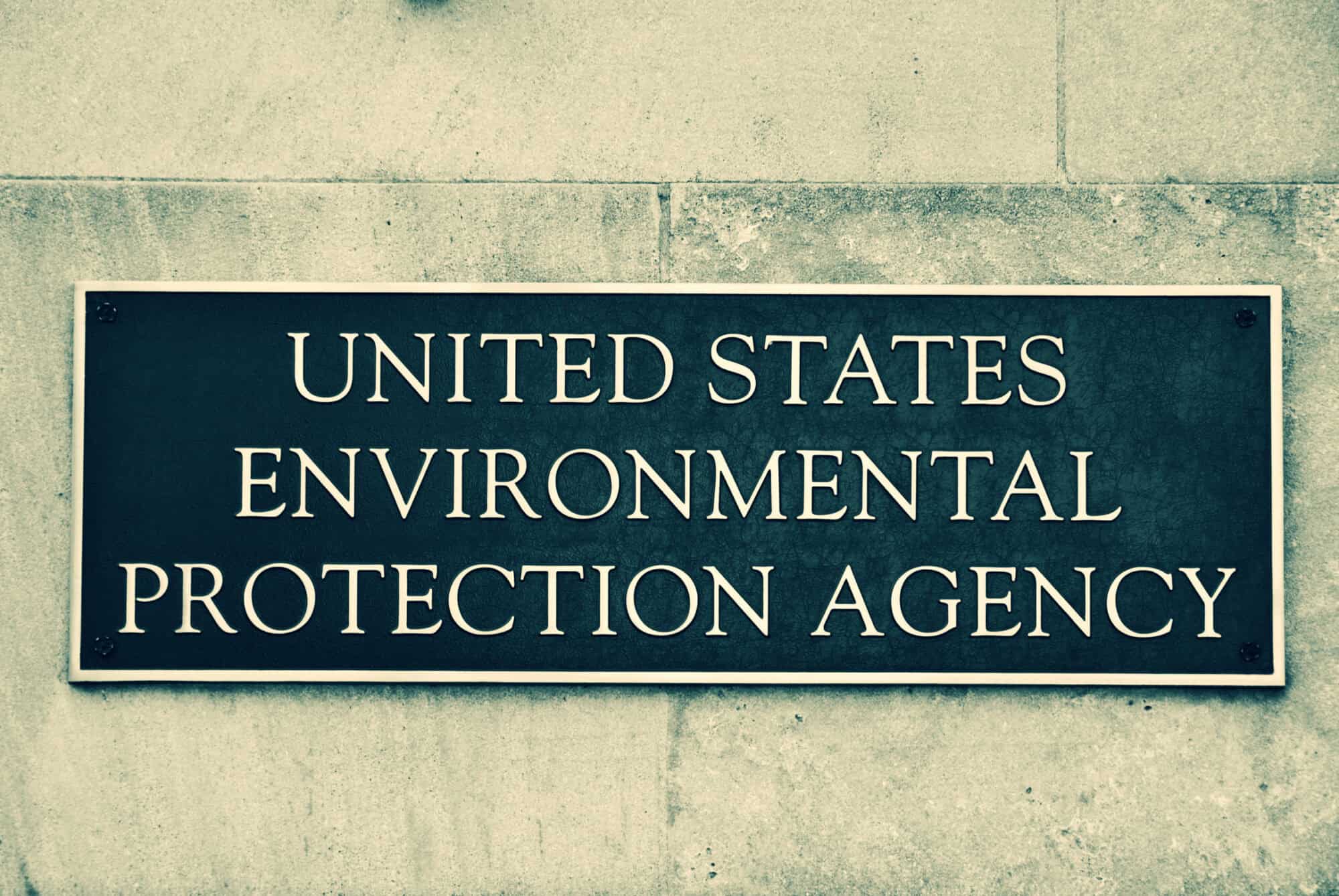
In its current form, the Environmental Protection Agency’s recent proposal to add specific per- and polyfluoroalkyl substances and PFAS categories to a database of toxic chemicals would place an unnecessary hardship on manufacturers, the NAM told the agency recently.
What’s going on: In October, the EPA published draft rules that would add 16 individual PFAS and 15 PFAS categories representing more than 100 individual PFAS to its Toxic Release Inventory, a list of potentially hazardous chemical release and waste management activities taking place in the U.S.
- Companies producing or manufacturing products with chemistries added to the TRI are required to complete and submit inventory forms each year for the chemicals they make and use over established limits.
- “The NAM believes this proposed rule will create unduly burdensome compliance requirements and increase costs for manufacturers and consumers as written,” NAM Vice President of Domestic Policy Chris Phalen said this month.
What should happen: The EPA should “adopt the following approaches to the proposed rulemaking”:
- Stay the proposal to give the public more time to comment on it.
- Revise the proposed PFAS and PFAS category additions to reflect “a meaningful baseline of scientific evidence” and ensure that “the scientific evidence justifying the listing[s] [is] supported by peer review and public comment.”
- List individually every PFAS added to the TRI and make each one identifiable.
- Narrow the group of PFAS listed as “chemicals of special concern” to reflect the scope of authority granted to the EPA by the fiscal year 2020 National Defense Authorization Act.
Why it’s important: “While the EPA estimates this proposed rule would result in up to 1,110 TRI reporting forms annually at an estimated cost of up to $6.6 million for its first year and up to $3.1 million for subsequent years, we anticipate the compliance costs to manufacturers will be significantly higher,” Phalen continued.
- If finalized as written, the rule will force manufacturers to hire additional workers and consultants, train employees on proper reporting processes, spend huge sums of money on testing and verifying results and much more.
- The result: “a costly drain on [manufacturers’] resources … [that] will lead to a rise in operational and production costs far above the EPA’s cost estimates for the proposed rule.”
Lucid Revs Up the Domestic Graphite Supply Chain
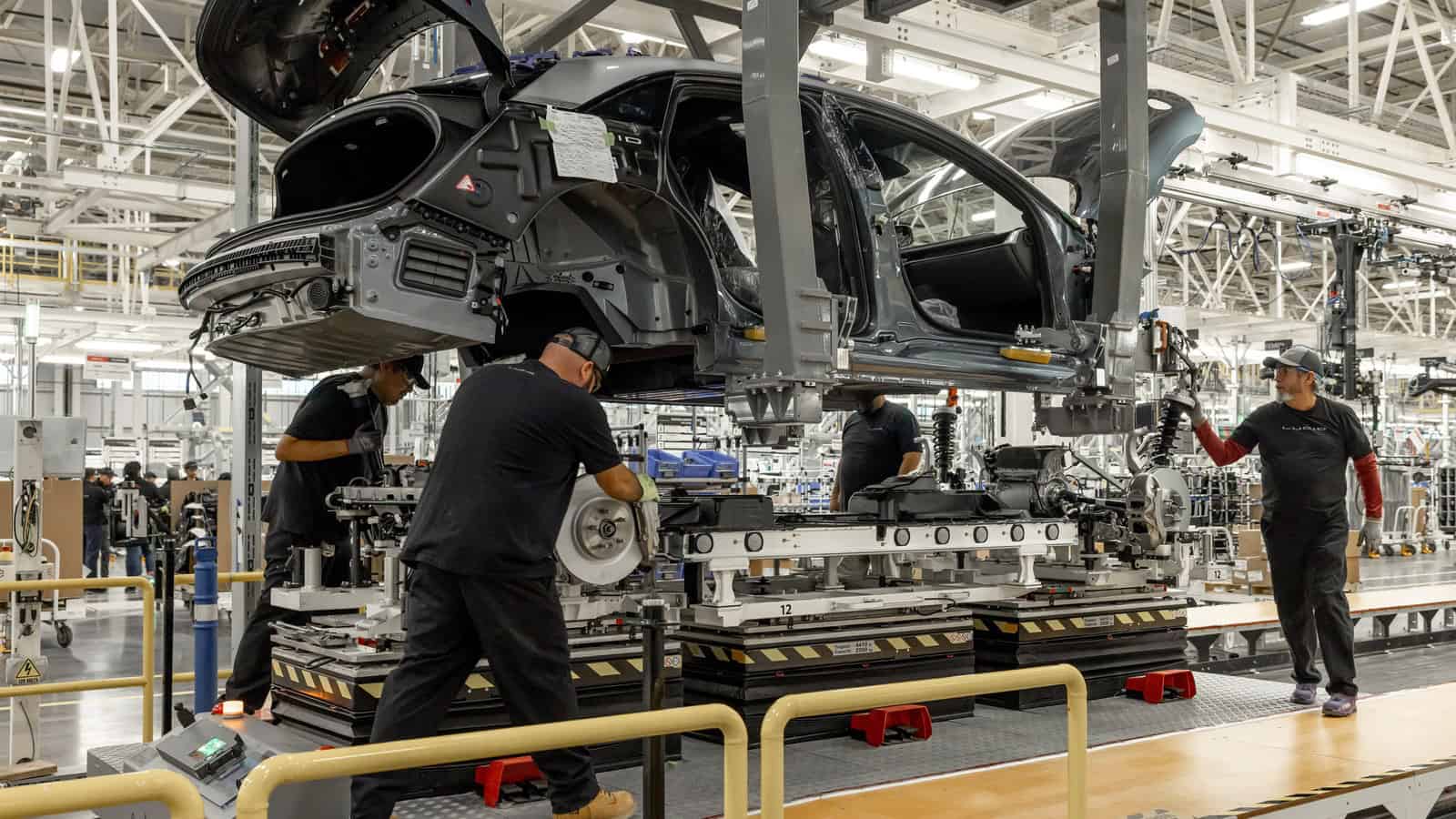
Lucid has already made one of the most energy-efficient cars on the market. Now the company is on a mission to strengthen supply chains for the critical materials powering its award-winning vehicles.
Supply chain warrior: The California-based electric vehicle manufacturer—whose 2025 Air Pure sedan is the first EV to achieve a milestone 5 miles of range per kilowatt of energy—recently reached an agreement with Alaskan mining exploration company Graphite One to purchase synthetic graphite for its vehicles’ battery packs.
- The deal, which goes into effect in 2028, is a crucial first step toward cementing a domestic supply chain of graphite, a mineral that makes up about half of every EV’s battery composition. EV batteries require both synthetic and natural graphite.
- “Today 100% of the graphite for batteries assembled in the U.S. comes from overseas,” said Lucid Motors Supply Chain Group Manager of Battery Raw Materials Michael Parton. “Building a robust domestic supply chain ensures the United States and Lucid will maintain technology leadership in this global race.”
Pandemic lesson: The global pandemic revealed the downside of depending on other nations for critical materials, and the importance of cultivating domestic sources instead.
- In 2020, “every company experienced major challenges when it came to shutdowns and global trade,” Parton said. “Having a domestic supply reduces production risk, accelerates response time and agility and lowers the need to carry higher levels of inventory.”
A midstream gap: When it comes to EV batteries and their supply chains, “much of the discussion is on localizing the bookends of the supply chain, the downstream battery production and the upstream mineral extraction,” Parton told us.
- Less discussed is the “midstream environment,” which comprises the precursor cathode active materials (P-CAM) and cathode active materials (CAM) stages. Materials used during these phases in the battery production process include critical minerals such as lithium, nickel and cobalt.
- The P-CAM market has been a difficult one to navigate, Parton added. For years, the P-CAM stage has been outsourced to countries with more cost-effective production. The problem: These countries also have less stringent environmental regulations than the U.S.
- “There’s limited investment announced [in the U.S.] in the refining and chemical conversion process at these stages, but it’s where the real need is,” Parton continued. “To promote localized sources of supply for mined and recycled minerals, there needs to be a domestic option for both P-CAM and CAM.”
A bipartisan issue: Lucid’s advocacy for a strong domestic supply chain has won bipartisan support in Congress.
- “There’s something in it for everyone when it comes to efficiency,” said Lucid Motors Senior Manager of International and Trade Policy Emily Patt, citing the environmental and self-sufficiency benefits of a resilient domestic supply chain.
What’s next: Lucid is expanding its vehicle lineup beyond the Air and the vehicle’s four trim levels.
- By the end of 2024, the company is scheduled to start production of the seven-passenger Lucid Gravity. The company has also teased an upcoming midsize platform, which is expected to start production in late 2026.
The grand vision: “The pursuit of efficiency drives Lucid as a company,” Patt said. “We’re not just making zero-emission cars; we’re committed to making the best use of the world’s resources to maximize the benefits for electrification and the planet.”
NAM Sees Strength for Manufacturing as Washington Transitions
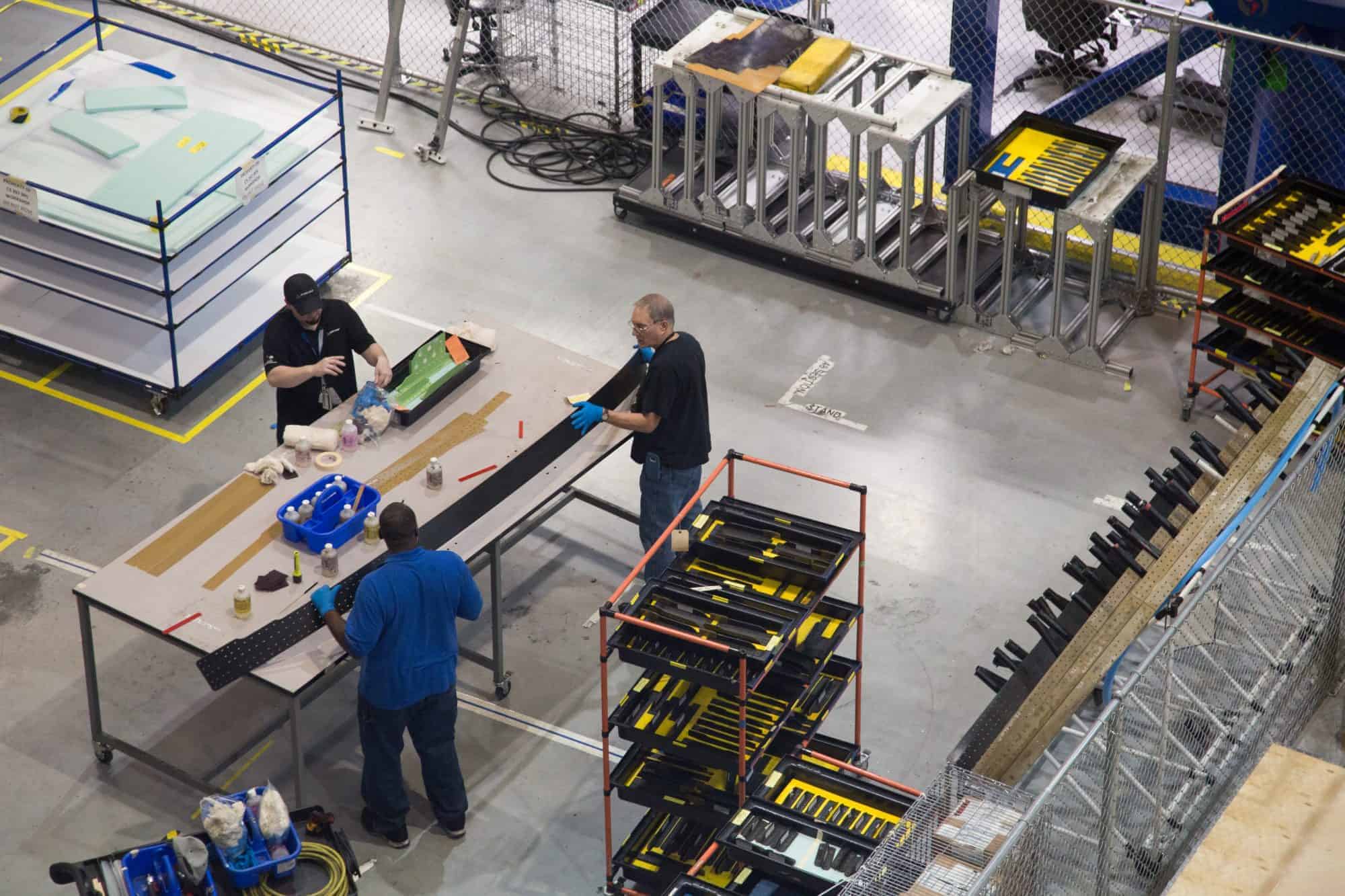
With a new administration and Congress on the horizon, the NAM is signaling confidence in its ability to secure wins for manufacturing in the United States, highlighting both recent achievements and policy priorities moving forward.
“The NAM has always focused on what’s best for manufacturing in America, and our track record speaks to that,” said NAM Executive Vice President Erin Streeter. “Our approach is consistent because we know what it takes to get results.”
What we’ve delivered: With post-partisan engagement, the NAM has achieved historic policy wins across both recent administrations, including:
- Tax reform: The NAM’s advocacy helped shape the 2017 tax cuts, driving billions in savings that manufacturers have reinvested in jobs, innovation and facility upgrades.
- Regulatory certainty: The NAM has played a pivotal role in streamlining regulations, reducing compliance costs under the Trump administration and working to slow regulatory expansion during the Biden years.
- United States-Mexico-Canada Agreement: The NAM was a key advocate for USMCA, safeguarding U.S. jobs by ensuring fairer competition and greater access to key markets.
- Energy advances: NAM-backed policies have supported growth in domestic energy production, creating a more stable energy market.
- Infrastructure and CHIPS Act: The NAM was instrumental in securing the historic Bipartisan Infrastructure Law and the CHIPS and Science Act, both critical for modernizing the economy, bolstering national security and ensuring a reliable semiconductor supply.
“These wins demonstrate what we bring to the table,” Streeter said. “By staying focused on manufacturing’s priorities, we can partner effectively with the new administration and Congress to create and protect jobs and strengthen communities.”
Looking ahead: The NAM’s focus on core issues remains critical for keeping the sector competitive and resilient, Streeter continued. These issues include:
- Securing tax reform: The NAM’s “Manufacturing Wins” campaign aims to lock in key 2017 tax provisions that manufacturers rely on for stability and growth. “Tax reform has been a game-changer,” said Streeter. “Protecting that progress means more jobs and manufacturing-led growth across the country.”
- Regulatory certainty: The NAM is advocating for balanced regulations that support competitiveness. “Manufacturers thrive with clear, fair rules,” Streeter noted. “We’re making sure Washington understands the importance of regulatory stability—and the danger of excessive regulation.”
- Energy security: The NAM is working to secure reliable, affordable energy while fostering innovation in sustainability. “Energy security and grid reliability are top of mind for every manufacturer,” Streeter added. “We’re ensuring manufacturers can continue to innovate, grow and drive America forward.”
Bottom line: The NAM remains focused on advocating for policies that strengthen U.S. manufacturing. “Our success is built on trust and influence,” Streeter said. “Our members know the NAM is a constant force, with the relationships and expertise to deliver, regardless of political changes.”
In related news, President-elect Trump has named campaign manager Susie Wiles as White House chief of staff (Reuters, subscription), a choice NAM President and CEO Jay Timmons called “a powerful move to bring bold, results-driven leadership to the White House from day one.”
NAM, Allies Urge Court to Vacate PFAS Rule
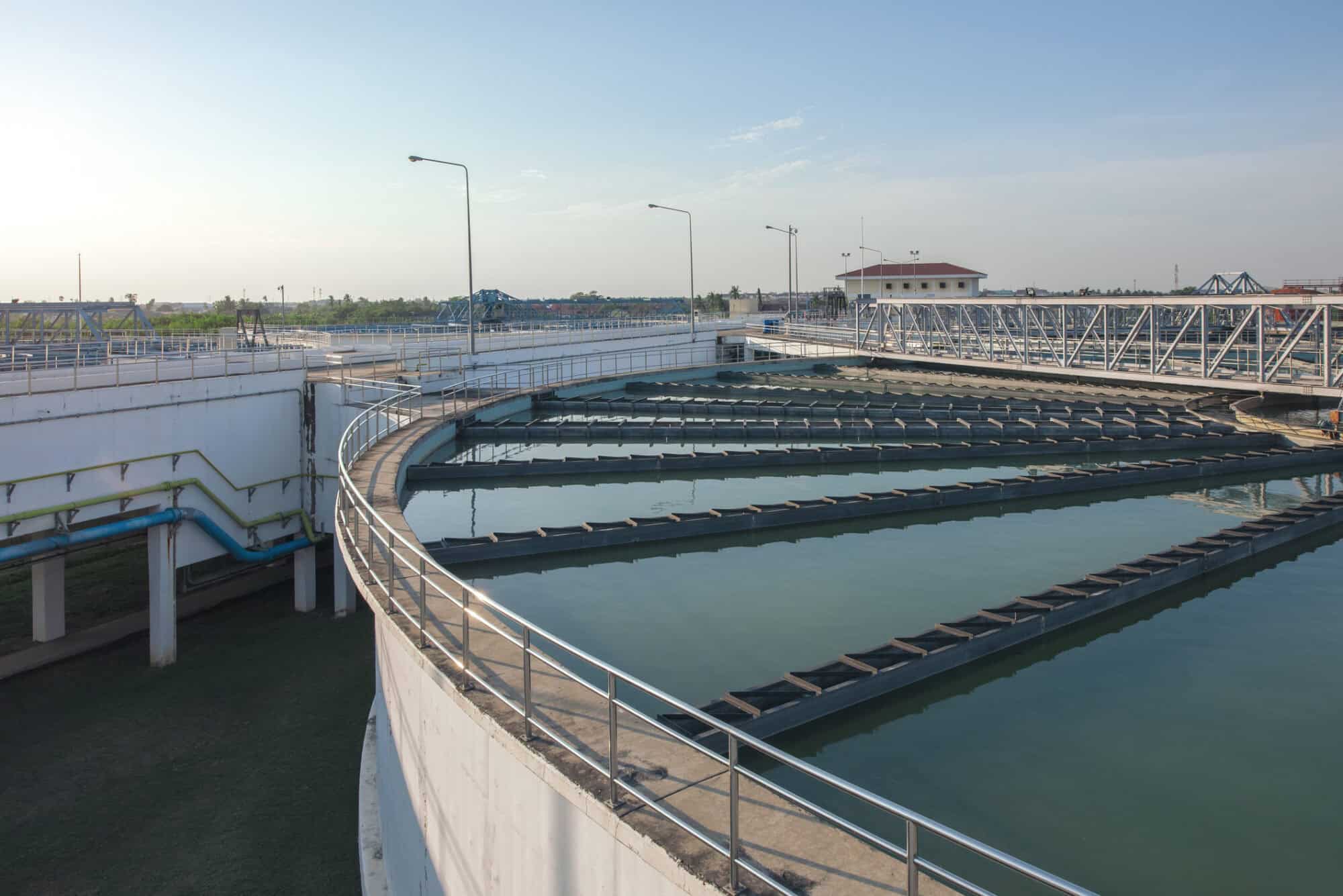
The EPA’s final rule setting national drinking water standards for PFAS should be vacated in its entirety, the NAM and two allies said in an opening brief filed in federal court Monday.
What’s going on: The NAM, the American Chemistry Council and U.S. chemical company Chemours asked the U.S. Court of Appeals for the D.C. Circuit to overturn the EPA’s rule, announced in April, which requires that municipal water systems nationwide remove six types of per- and polyfluoroalkyl substances from drinking water. Trade groups representing the water systems have also sued to overturn the rule.
The grounds: The rule is unlawful and must be set aside for the following reasons:
- The EPA used a deeply flawed cost-benefit analysis to justify the rule.
- The EPA conducted a woefully incomplete feasibility analysis that ignores whether the technology and facilities necessary for compliance actually exist.
- Critical parts of the rule exceed the agency’s statutory authority under the Safe Drinking Water Act and flout the act’s express procedural requirements.
- The EPA failed to consider reasonable alternatives or respond meaningfully to public comments that undercut its judgment.
- The agency “lacked sufficient data to regulate” HFPO-DA, one of the PFAS chemicals that falls under the rule.
Why it’s important: PFAS “are substances at the center of modern innovation and sustain many common technologies including semiconductors, telecommunications, defense systems, life-saving therapeutics and renewable energy sources,” according to the brief.
- The NAM and its co-petitioners “support rational regulation of PFAS that allows manufacturers to continue supporting critical industries, while developing new chemistries and minimizing any potential environmental impacts. But that requires a measured and evidence-based approach that the [r]ule lacks.”
What’s next: Briefing in this case will continue through the spring, with oral argument to follow and a decision from the D.C. Circuit expected in late 2025.
BLM Proposal Restricts Access to Energy Sources

The Interior Department is seeking to close hundreds of thousands of acres of land in Wyoming to traditional and renewable energy development, a plan that would cut crucial natural resource development off at the knees (POLITICO Pro, subscription).
What’s going on: Though the Bureau of Land Management’s plan, released Thursday, scales back from previous iterations the acreage recommended for conservation, it still considerably “throttles back how much of the federally administered area’s 3.6 million acres is in play for different forms of energy development.”
- The final announcement, part of the BLM’s proposed Resource Management Plan for the Rock Springs Field Office, is tantamount to “pushing Wyoming off an economic cliff with nothing more than a tattered parachute,” said John Barrasso (R-WY), ranking member of the Senate Committee on Energy and Natural Resources. “This plan isn’t designed to manage Wyoming’s natural resources. It is designed to suffocate them. … [It] directly jeopardizes Wyoming’s economy and our way of life.”
What it would do: If approved, the blueprint would replace its 27-year-old predecessor document and prohibit drilling on nearly 1.08 million acres—almost twice the number currently off-limits to new oil leases.
- It would “also [exclude] 494,350 acres from wind and solar power development and [close] 536,018 acres for geothermal power projects.”
Why it’s important: The plan could reduce economic activity in Wyoming’s oil and gas sector by some $907 million each year and cost the state nearly 3,000 jobs, according to estimates by several energy groups (Cowboy State Daily).
The NAM says: “This latest move by the Interior Department undermines U.S. energy security by needlessly restricting access to available domestic sources of critical natural resources as part of an all-of-the-above energy future,” said NAM Director of Energy and Resources Policy Michael Davin. “We urge the agency to reexamine and revise its plan.”
Sylvamo Supports Healthy Forest Ecosystems
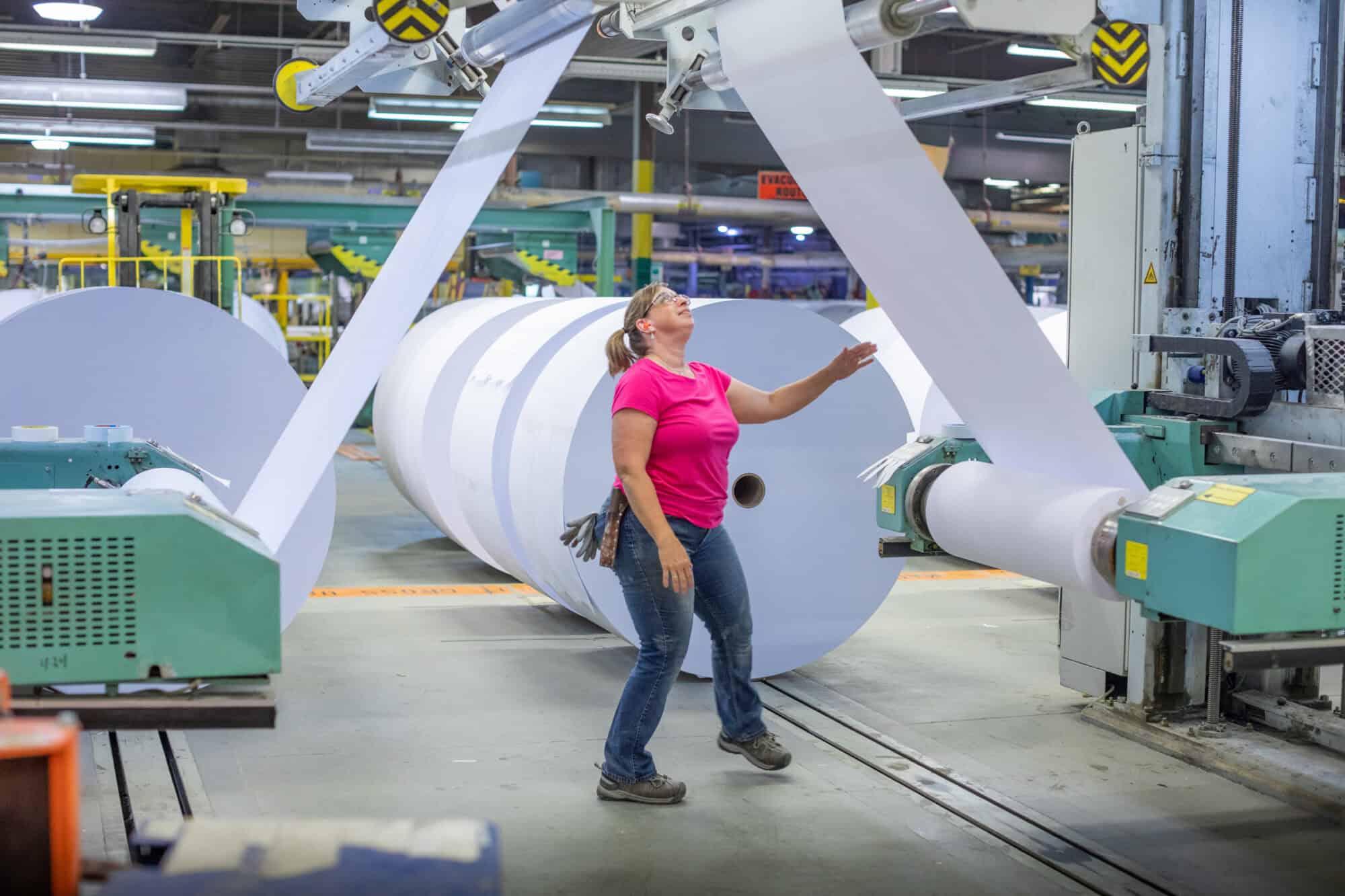
With a name that means “love of forests,” Sylvamo has a built-in dedication to sustainability. And the Memphis, Tennessee–based paper company, which spun off from International Paper in 2021, lives up to its moniker.
A holistic approach: “We use the whole tree in the manufacturing of our products,” Sylvamo Chief Sustainability Officer James McDonald told the NAM. “We use the fiber from the wood to make our paper, and all the residuals—think of the sticky stuff in trees—we capture and use to generate energy.”
- This process supplies the company with approximately 85% of its global energy needs, according to McDonald.
Planting the world: Sylvamo, which produces well-known brands like Hammermill, Accent Opaque, Springhill and HP Papers, is committed to restoring and protecting forests worldwide.
- “Our entire business depends on the sustainability of forests,” McDonald said. “It turns out your third-grade science teacher was right—photosynthesis does work. The more trees we grow, the more we can clean the air and protect the environment.”
Big ambitions: Sylvamo has conserved, enhanced or restored more than 37,000 acres of forestland to date. It has set the lofty goal of reaching 250,000 acres of forestland by 2030.
- To that end, the company is supporting the Nature Conservancy’s work to create a healthy, resilient and connected Appalachian landscape in the U.S. and the World Wildlife Fund’s work to restore Brazil’s Atlantic Forest, while also working with individual landowners to enhance forest management practices in France.
Diverse sources: Sylvamo primarily sources local fiber to manufacture its products in Europe, Latin America and North America, a strategy that enables a smaller environmental footprint, McDonald said.
- “Most of the fiber is sourced very close to [each] mill, which supports our low-cost assets in each region and this global footprint advantage in those markets,” he added.
GHG goal: The company is committed to a greenhouse gas reduction goal of 35% from a 2019 baseline across all three emissions scopes, an ambitious goal that demonstrates a commitment to improve Sylvamo’s climate impact continuously, according to McDonald.
- A quick refresher: Scope 1 refers to direct emissions, Scope 2 to indirect emissions associated with the purchase of power and Scope 3 to indirect emissions produced by a company’s value chain.
- Above all, “we try to be efficient with the energy we do use so that we can use less to produce our products,” McDonald told us.
A vital commodity: Paper and paper products continue to “play a crucial role every day in people’s lives,” said McDonald—and they are some of the world’s most recyclable materials.
- Some 68% of paper in the U.S. was recovered in 2022. In some parts of Brazil, the percentage is about 60%, and in Europe, it’s near 80%, he added.
The last word: “Just think about it: We use paper for education, communication, entertainment and more,” McDonald pointed out. “Our product plays a huge role in society and has a good lifecycle story.”
Emerson Finds Energy in Sustainability
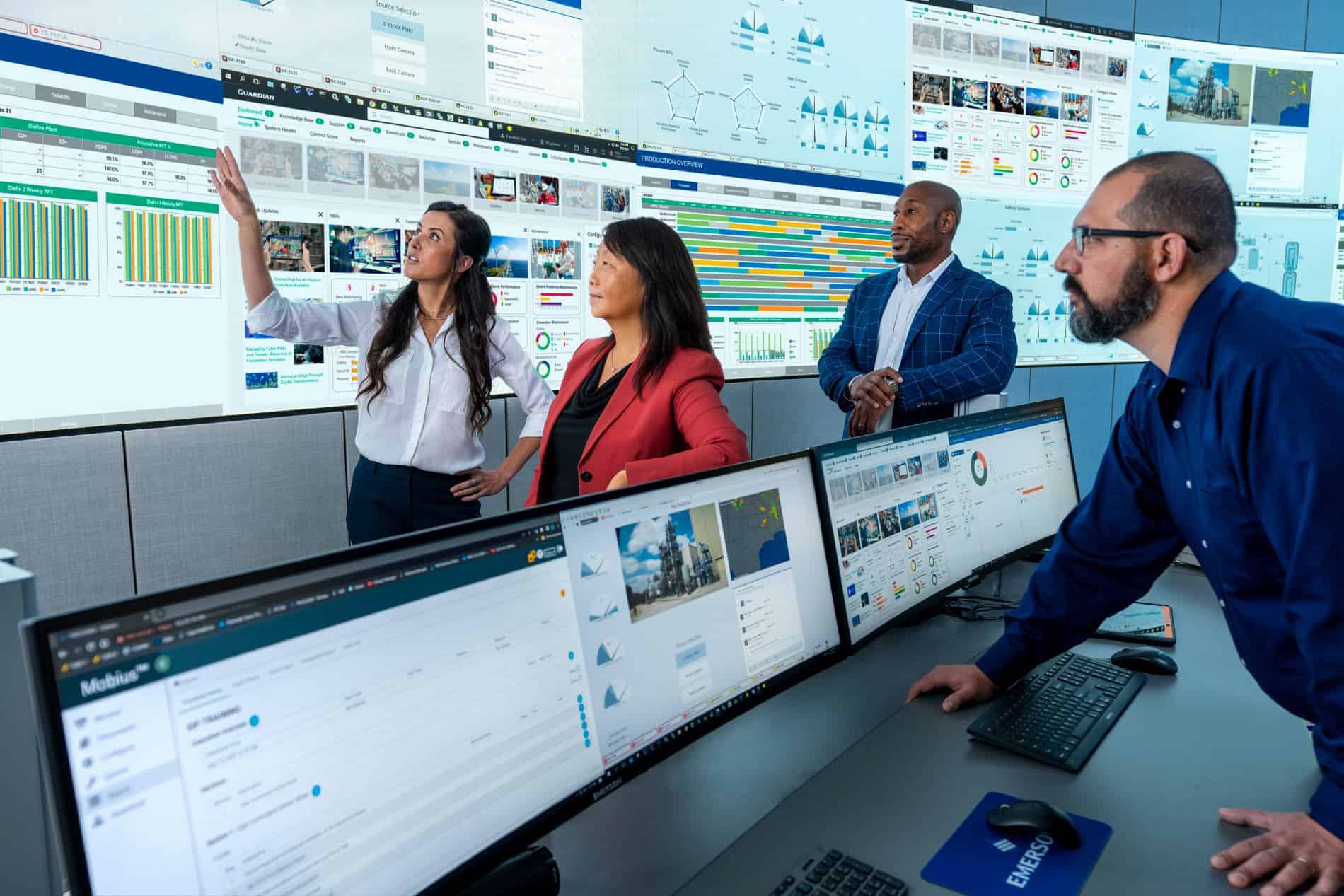
When Emerson’s first-ever Chief Sustainability Officer Mike Train talks about his company, his enthusiasm shines through.
- “What we do to enable our customers is huge,” said Train. “We have an important role to play—and I get a lot of energy out of that.”
An aggressive push: The technology and engineering company, headquartered in St. Louis, Missouri, has been making big moves in sustainability over the past few years—beginning with a goal in 2018 to reduce some of its greenhouse gas intensity by 20% over 10 years.
- At the time, the goal was ambitious, and the company wasn’t quite sure how it would achieve it. But employees banded together and pulled it off.
- “We actually achieved the goal in 2022—six years early,” said Train. “But the act of putting out a goal and not knowing exactly how we’d solve for it … has been driving the culture of our company. Our employees are proud we put it out there, proud to have participated, and it’s activated thousands of people to get excited about what we’re doing.”
An inclusive approach: Since then, the company has applied a range of tactics. From “energy treasure hunts,” in which teams search for energy waste in facilities, to renewable energy procurement and collaborations with supply chain partners, Emerson is finding interesting and inclusive ways to make an impact.
- The company has gone from getting 3% of its power from renewables to getting to 49% from those sources. And it now has a commitment to use 100% renewable energy by 2030.
- Emerson is setting other big goals, too, from net-zero operations by 2030 to a zero-waste-to-landfill pledge, along with other water and biodiversity actions.
An effective framework: The company has a three-part approach to its sustainability practices.
- Greening Of Emerson involves the actions Emerson is taking to reduce its own footprint by minimizing waste and engaging its supply chain.
- Greening By Emerson involves the company’s activities to help a wide range of manufacturing customers improve their own sustainability, often through Emerson’s automation portfolio and expertise. This, according to Train, is where Emerson has its biggest opportunity for impact.
- Greening With Emerson refers to the company’s work with government and research organizations on policy and innovation, offering technical expertise and manufacturing perspective to help drive action.
A group effort: Train has seen the company coalesce around these goals—from the sustainability team he works with every day (“they bring a lot of energy and passion to what we’re doing”) to the rest of the company’s 74,000-person workforce.
- “The fun part of sustainability is everyone is learning it together,” Train continued. “You’re allowed and encouraged to borrow ideas from each other, so the collaborative part of sustainability is an awful lot of fun.”
Senior Sinema Advisor Chris Phalen to Lead NAM’s Energy and Environment Policy Team
Washington, D.C. – The National Association of Manufacturers announced that Chris Phalen, most recently a senior policy advisor to Sen. Kyrsten Sinema (I-AZ), is joining the NAM as vice president of domestic policy:
“As the NAM continues to be at the forefront of energy policy debates before Congress and federal agencies, Chris’ depth of experience and record of accomplishments will help us further stand out and influence outcomes in support of an all-of-the-above energy policy,” said NAM President and CEO Jay Timmons. “Manufacturers are facing a political war on energy. Permitting reform, securing critical mineral supply chains and regulatory barriers slowing the clean energy transition are just some of the defining issues impacting our industry’s ability to create well-paying jobs, as well as our nation’s energy security. Chris will help us steer policymakers in the right direction.”
Sen. Sinema has been a key figure in negotiating solutions to manufacturing priorities, and as her advisor, Phalen was a leader in negotiating and implementing critical energy policies and in writing the permitting reform provisions in the Fiscal Responsibility Act and key sections of the Infrastructure Investment and Jobs Act, including all provisions on energy and mining. Phalen brings a record of active engagement with key agencies, including the Environmental Protection Agency, the Department of Energy, the Department of the Interior, the Department of Agriculture, the White House Council on Environmental Quality, the Federal Energy Regulatory Commission and the Federal Permitting Improvement Steering Council. Phalen previously worked for leading energy companies, including Chevron and the Rio Tinto Group.
Timmons added, “Manufacturers are leading the global effort to fight climate change and develop the technologies needed to achieve climate goals. With Chris’ keen insight into these important policy discussions, the NAM will become an even more effective voice for the 13 million people who make things in America.”
Phalen will report to NAM Managing Vice President of Policy Chris Netram and work closely with NAM Executive Vice President Erin Streeter. His policy portfolio will include sustainability, climate, permitting reform, labor, transportation and infrastructure, and he will work alongside NAM Vice President of Domestic Policy Charles Crain and NAM Vice President of International Policy Andrea Durkin.
-NAM-
The National Association of Manufacturers is the largest manufacturing association in the United States, representing small and large manufacturers in every industrial sector and in all 50 states. Manufacturing employs nearly 13 million men and women, contributes $2.89 trillion to the U.S. economy annually and accounts for 53% of private-sector research and development. The NAM is the powerful voice of the manufacturing community and the leading advocate for a policy agenda that helps manufacturers compete in the global economy and create jobs across the United States. For more information about the NAM or to follow us on Twitter and Facebook, please visit www.nam.org.
